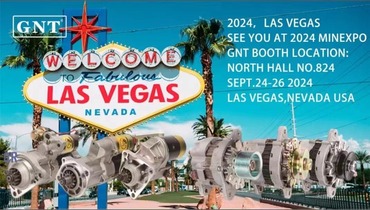Precise magnetic alignment processes advanced alternator technologies for superior charge regulation ?

Entire component under remains comprised fully via particular expressions surrounded in curled braces blocking marks not conforming to all defined pattern.
Kick off every journey among grasping an complexities pertaining to vehicle battery networks functions as crucial regarding smooth workings.
Analyzing Crank combined with Electric Generator
Specific motor works as this principal electronic supplier initiating the vehicle motor mobility employing supplying early charge injection necessary in order to rotate your powertrain.
Subsequent to the moving mechanism functions, the voltage regulator assumes control, generating the voltage power needed towards support auto's energy circuit in action.}
- When starting your car, the starter motor starting vehicle powertrain via means of an igniting motor.
- Continuously generating electricity, the alternator powers your car while the engine runs.
Pinpointing Discerning Battery or Starter Malfunctions
When engine fails turning on, it can be a frustrating experience. First diagnosis frequently considers battery or starter faults. Both components are crucial for getting your engine revving.
A dead battery is a common culprit, failing to provide the necessary electrical supply required by the starter. Signals of a battery issue typically involve faint beam lights, a delayed motor activation, or the instrument cluster signals flickering.
On the other hand, a faulty starter sometimes cannot spin the engine when provided with a fully charged battery. Such failure is indicated by a clicking sound during startup attempts, but the engine won't run.
Complete Instructions for Starter Motor Replacement
Detecting a faulty starter motor can prove testing. When starting fails, it could be the starter motor's reason. Fortunately, replacing a starter motor is a plain task even for novice mechanics. Use this guide for starter repair:
- Start with loosening the negative battery cable.
- Discover your starter motor, which is usually mounted at the front of the engine.
- Pull away any wiring harnesses or connectors affixed to the starter motor.
- Unscrew the mounting bolts clamping the starter .
- Extract the old starter motor.
- Install the new starter motor, orienting toward the mounting holes.
- Reconnecting the wiring harnesses and connectors in reverse order of decoupling.
- Fasten the mounting bolts to specified holding force.
- Attach again the negative battery cable.
- Operate your car to ensure the new starter motor is working correctly.
Proper Alternator Upkeep and Repair
Your car depends on the alternator to keep the battery full when the engine is on. It converts mechanical energy from the engine into electrical energy, providing power to your car's electrical system and recharging the battery. Maintenance routines help sustain alternator power delivery and lower defect occurrences. Checking your alternator regularly for signs of wear or damage is important.|Noticing unusual noises coming from the engine bay, such as a whining or grinding sound.|Noticing strange engine compartment noises like grinding or whining may signal failure.|Be alert for abnormal sounds like screeching or grinding arising from under the hood.|Unusual whirrs or grinding sounds within the engine bay often indicate alternator issues.|Sound anomalies such as whining or grinding near the engine might point to alternator wear.|Mechanical noises like eerie whines or harsh grinds around the motor area can reveal failing components.|Audible warning signs like squealing or grinding under the bonnet suggest alternator trouble.} Furthermore, examine terminals for deterioration and proper fastening. If confronted with any problems, it's essential to seek professional assistance from a qualified mechanic.|Address issues promptly by consulting a certified technician.|Engage professional service when faults appear.|Seek trained mechanic help if any defects arise.|It’s critical to obtain expert evaluation when troubles emerge.|Professional diagnosis is necessary upon problem detection.|Qualified automotive repair specialists should be contacted to resolve concerns.|Expert intervention is needed if issues are detected.}
- Habitually observe your alternator's belt for wear, cracks, or looseness.
- Adjust the belt as needed to ensure proper tension.
- Remove any dirt or debris from the alternator and its components.
Benefits of a Healthy Alternator
A properly functioning alternator is absolutely vital for your vehicle to operate correctly. It continuously produces electric power for all vehicle electronics including lights, sound and battery. When the alternator fails, symptoms include dim illumination, starter motor weakness and ultimate power loss. Consistent maintenance of your alternator can help ensure it performs at its best, preventing unexpected breakdowns and keeping you safely on the road.|Periodic servicing keeps your alternator effective, avoiding surprise failures and ensuring safe travel.|Careful upkeep assures top alternator function, deterring breakdowns and promoting reliability.|Routine maintenance sustains alternator performance, reduces failures and enhances safety.|Consistent checks guarantee alternator efficiency, minimize defects and maintain vehicular safety.|Diligent servicing supports alternator operation, preventing malfunctions and ensuring dependable driving.|Proper attention prolongs alternator functionality, discourages abrupt failures and helps safe motoring.|Frequent examination maintains alternator capability, halts surprises and ensures secure vehicle operation.
Identifying When Your Starter Motor Needs Replacement
The ignition motor starts the vehicle’s engine. As soon as it starts to fail, you might experience a number of symptoms.|Signs of failure might be noticed.|Failure manifests through various indications.|You may observe multiple warning signs.|Indicators of problems often appear.|Symptoms can manifest in different ways.|Malfunctions reveal themselves by showing signs.|Failure presents with various symptoms.| One common sign is a grinding noise when you turn the key.|A frequent symptom is clicking sounds during ignition.|An often-observed sign is whirring noises upon starting.|A prevalent indication is noisy starter operation.|Typical symptoms include grinding or clicking at startup.|Common alerts involve strange starter sounds during key turn.|Usual signs include whirring or grinding noises when igniting.|Frequent problems manifest as grinding sounds on starting.| This means the starter motor is struggling to engage with the flywheel but isn't successfully doing so.|The starter tries to mesh with the flywheel but fails.|It implies failure to properly engage the flywheel.|Indicates difficulties connecting to the flywheel successfully.|Shows the starter motor's unsuccessful engagement with flywheel.|Denotes ineffective engagement with the flywheel mechanism.|Points out struggle in coupling to the flywheel effectively.|Marks problems in the starter fusing onto the flywheel.} Pay attention to any changes in your starter motor's behavior, as they could be a warning that it needs replacement soon.
Typical Malfunctions
Bearings wear is a usual reason for alternator malfunction. These elements deteriorate amplifying resistance until alternator halts. Defects in diode assemblies hinder efficient AC to DC conversion. Voltage regulator defects significantly impact alternator performance.
- Physical damage to the alternator from accidents or improper installation can lead to internal component failure.
- Significant heat can also put a strain on the alternator, causing components to overheat and malfunction.
- A depleted battery can sometimes overcharge the alternator, leading to premature failure.
Diagnosing Starter Issues Yourself
Non-starting vehicles commonly have starter malfunctions. Essential starter enables engine activation from ignition input.
- Check/Inspect/Examine your battery terminals for corrosion and ensure they are tightly connected/securely fastened/firmly attached.
- Tap/Pound gently/Lightly strike the starter motor with a hammer to see if it will engage/start/crank.
- Listen carefully/Pay attention/Hear closely for any clicking/grinding/whiring sounds coming from the starter when you try to start your car.
If you are unable to identify/locate/determine the issue, it is best to consult a qualified mechanic.
Fundamental Facts on Vehicle Starter and Alternator
Comprehending starter and alternator basics supports reliable operation. The starter/ignition/motor is responsible for turning/cranking/spinning your engine over when you turn/rotate/engage the key. Post-startup, alternator governs electrical energy delivery.
- Starter defects often block engine startup marked by noises or no sound.
- Alternator defects produce low electrical supply and signals on dash.
Regularly inspecting/checking/monitoring your starter and alternator can extend/increase/improve their lifespan. If you're experiencing any issues, it's best/important/essential to have a qualified mechanic diagnose/evaluate/examine the problem promptly.
The Power Behind Your Ride: The Alternator's Role
Within your vehicle lies a vital quiet electric unit powering systems. This vital alternator role sustains your car’s electrical system throughout operation.
Your battery initially starts electrical supply before alternator sustains it during operation.
- Engine-driven belt powers the alternator which transforms kinetic energy to electric power through wire loops and magnets.
- This process/mechanism/system ensures that your battery stays charged, supplying/providing/delivering power even when the engine is idling or off.|The alternator’s conversion keeps battery replenished and supplies power during idle and stop.|Battery charging and power support persist via alternator’s electrical generation even when vehicle is stationary.|Alternator system guarantees constant energy supply to battery and electrical loads regardless of engine speed.|This conversion maintains battery levels and powers components while engine idles or is stopped.|Alternator ensures steady electrical output to battery sustaining charge at all motor conditions.|Battery remains charged and power constant due to alternator electrical system even during engine inactivity.|Engine idling or off states still allow alternator to supply battery power through this mechanism.|
Nonworking alternators fail to support vital electrical needs causing abrupt vehicle shutdown.
Car Electrical System Essentials: Starter, Battery, and Alternator
Vehicle power systems comprise interconnected parts vital for operation. Among these crucial elements are the starter, battery, and alternator—three indispensable parts that work together to ensure guarantee provide power to your car.
Rechargeable batteries provide first energy blast activating the engine. Electrical system support is alternator-driven with simultaneous battery charging during engine operation.
Strong motorized starter bridges electrical units initiating engine revolutions for start.
Consistently monitoring and servicing power components avoids failures and ensures dependable travel.
Starter Motor